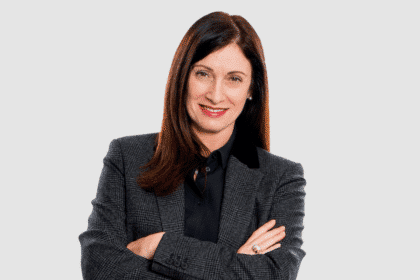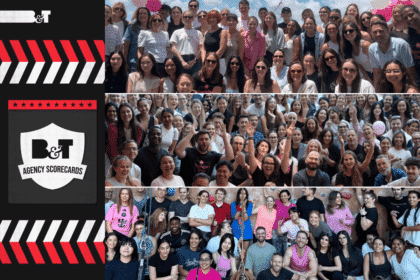Consulting work is not new. However, recent events have created a rich landscape of opportunity for executives to offer their services as fractional engagements, from the pandemic and challenging global economic conditions to the race toward AI and the rise of digital-first entrepreneurship, startups, and the gig economy.
We’re now witnessing the trend of an increasing number of executive-level marketers and data and analytics professionals establishing themselves as fractional CMOs or CDOs. These experts work with multiple clients to provide them with curated access to their experience and expertise at a lower cost than a full-time C-suite hire.
To unpack this trend, we spoke to several marketing and data experts, many of whom are fractional themselves, working in Asia-Pacific.
Flexibility and costs: Why companies are increasingly choosing fractional executives over full-time CMOs/CDOs
Experts agree companies are seeking strategic expertise without the full-time overhead, allowing access to high-calibre marketing leadership at a more flexible and cost-effective price point.
“This is especially critical for complex scenarios like regional expansion, such as SaaS companies entering the Asia Pacific market, where specialised, nimble leadership can drive strategic market entry,” said Michelle Carden, Senior Regional Marketing Lead B2B SaaS, APAC, Surreal.
According to Billy Loizou, APAC Area Vice President, Amperity, the shift toward fractional executives is being driven by several key market dynamics. The most immediate benefit is cost-effectiveness – companies can access senior-level expertise at a significantly lower investment compared to a full-time executive hire, making this expertise accessible to businesses that previously couldn’t consider it.
“But the real value goes beyond cost savings,” Loizou explained. “Most fractional executives work with multiple companies simultaneously, which creates a unique ‘cross-pollination’ effect. When they encounter a challenge in one business, they can apply insights and solutions they’ve seen work in other contexts. This breadth of current, hands-on experience across different industries and business models is something a full-time executive simply can’t offer.”
According to Loizou, another critical factor is speed to value. Fractional executives have usually seen and solved similar challenges dozens of times across different contexts. Instead of spending months getting up to speed like a traditional hire, they can typically diagnose issues and implement solutions within weeks. They’re not learning on the job – they’re applying proven playbooks and adapting them to your specific situation.
“The model also provides incredible flexibility,” he added. “Companies can scale the engagement up or down based on their needs, bring in different expertise at different growth stages, and essentially build a dynamic executive team that evolves with their business. In today’s fast-moving market, this adaptability is becoming essential rather than optional.”
Mark Baartse, Outsourced Chief Marketing Officer, MarkBaartse.com Consulting sees two main reasons for this trend.
“One is for small or mid-sized companies who can’t justify the higher salaries associated with a role like that,” he explained. “They often have a head of marketing who is great at executing but needs support in planning and strategic thinking or to simply get them out of a rut.”
“The other reason is to bring in a senior specialist, to either get additional support in a specific skill/area, or just as a general overflow to take on a more self-contained project that the existing CMO/CDO doesn’t have capacity or skills for. I’ve been engaged in both ways.”
Som Puangladda, Founder & Managing Director, Nomadic Growth, agreed. She said the traditional full-time executive model doesn’t always fit in today’s fast-moving business world, particularly when companies are transitioning between either scaling up or down.
“Fractional leaders offer a flexible, results-driven solution, bringing strategic expertise to tackle key challenges or accelerate growth without long-term commitment. For growing companies or those mindful of resources, it’s a smart way to access top talent and focus on what matters most,” she explained.
Fractional CMOs and CDOs reflecting today’s rapidly shifting digital and AI landscape
With current financial headwinds combined with the increasing momentum of AI, small-to-medium organisations are increasingly turning to fractional Chief Data Officers (CDOs) to address economic considerations, previous underinvestment in foundations for AI, and capability-building needs, said Gladwin Mendez, Fractional Chief Data and Analytics Officer, GEC Prudentia.
“For example, in the past, we’ve been approached by board members and executives saying, “We will take three AI!”. This illustrates the increasing need for data and AI literacy at all levels,” he explained.
“For larger organisations, hiring fractional CDOs is still a gamechanger, the core outcome of which might include things like the full transfer of our knowledge, upskilling, and building out frameworks and/or development plans for a future permanent CDO as opposed to hiring externally.”
According to Mendez, fractional CDOs not only deliver expert leadership without the full-time financial commitment but also provide mentoring and upskilling for less experienced teams or future data leaders.
“This allows companies to achieve strategic outcomes, while simultaneously developing their own internal talent for long-term sustainability,” he said.
The fractional trend underscores the rapidly evolving digital marketing ecosystem, where agility, specialised expertise, and strategic flexibility are paramount, added Carden.
“It reflects a broader shift towards project-based, outcome-driven talent models that prioritise specialised skills, especially for complex scenarios like international market expansion and region-specific marketing strategies,” she said.
The trend shows how fast things are changing, added Nick Rameka, Managing Director, JungleMapper. Especially given marketing and digital spaces are more complex than ever, with constant innovations like AI and data analytics.
“Businesses need flexibility to keep up with shifting consumer behaviours and technologies,” he said. “Fractional roles reflect this need for agility and results-driven strategies. It also ties into the gig economy, where businesses are more open to hiring experts for specific projects rather than full-time roles.”
The rise of fractional leadership reflects a fundamental shift in how businesses need to operate today, Loizou explained. Even a $5M company now requires the same sophisticated marketing stack that was once only accessible to enterprises – think CDP platforms, marketing automation, advanced analytics, and AI-driven personalisation. The complexity has grown exponentially.
“Take a typical mid-sized ecommerce company. They’re juggling multiple data sources, trying to create unified customer profiles, managing omnichannel campaigns, and implementing predictive analytics – all while competing with larger players who have entire teams dedicated to each of these areas. That’s where fractional leadership becomes transformative,” he said.
According to Loizou, what’s particularly exciting is how this model democratises access to senior expertise. A company doing $10M in revenue can now get guidance from someone who’s managed $100M+ marketing budgets and implemented enterprise-grade solutions. They can tap into best practices from multiple industries and apply proven strategies that would have been out of reach just a few years ago.
“This shift is also pushing the boundaries of traditional executive roles,” he added. “The lines between marketing, technology, and data are blurring. Companies need leaders who can not only craft marketing strategy but also understand the technical infrastructure required to execute it effectively. The fractional model lets them access this hybrid expertise in a way that’s both practical and affordable.”
The companies adopting fractional executive roles – more common than you think
Experts reveal companies typically looking at adopting these roles often fall into one of the following categories:
- A funded startup that needs to step up its marketing or data strategy and execution but wants to try before they buy
- Mid-sized startups, scale-ups, and smaller enterprises with complex marketing or data needs, including unicorn SaaS companies expanding into new regions like Asia-Pacific.
- An existing business looking to create a new product/range
- An existing business that has one senior marketer or data lead, but needs senior support to help coach/support them
- A fast-scaling business that needs a flexible marketing or data team to fill the gaps
- Businesses that know they need expert marketing or data leadership they can trust but can’t afford a true CMO or CDO on a full-time basis
- Larger organisations expanding into new markets or launching key initiatives, all without disrupting their existing leadership structure.
Fractional CMOs have to be able to juggle many problems and projects, likely for more than one client, added Geoff Main, Managing Director & Founder, PassionBerry Marketing. So, you need to be able to shift your thinking across various different mindsets like target audiences, messaging, brands, and so on.
“Resilience, adaptability and a broad skillset outside of marketing,” he added. “Of course, fractional CMOs also need some key marketing skills that are directly applicable to the challenge so they can score some early wins.”
“Stakeholder management, particularly working in complex organisations, is also very valuable, as is being super clear about your communication style and being consistent about your approach. This is one of the quickest ways to build trust.”
According to Loizou, we’re seeing adoption across several distinct segments. First, there are the high-growth companies in the $5-20M revenue range – typically tech startups or D2C brands that have proven product-market fit and need to scale their customer acquisition. They’ve outgrown their initial marketing playbook but aren’t ready to commit $300K+ annually for a full-time CMO.
“Then you have established mid-market companies in the $20-50M range who are going through significant transitions – maybe they’re expanding into new markets, launching new product lines, or undertaking digital transformation. These companies often have solid marketing teams but need executive-level guidance for specific initiatives or to modernise their approach to data and digital,” he said.
Loizou highlights that what’s interesting is that we’re also seeing larger enterprises, particularly in traditional industries like manufacturing or professional services, using fractional leaders to drive specific transformation projects or to fill capability gaps. They might have a full C-suite but bring in a fractional CDO to lead their AI strategy or a fractional CMO to overhaul their digital presence.
“The trend has evolved beyond just CMOs and CFOs – we’re seeing fractional CTOs helping companies modernise their tech stack, fractional CDOs building out data strategies, and even fractional CEOs helping companies navigate critical growth phases,” he added. “It’s becoming a strategic tool for accessing specialised executive talent exactly when and how it’s needed most.”








